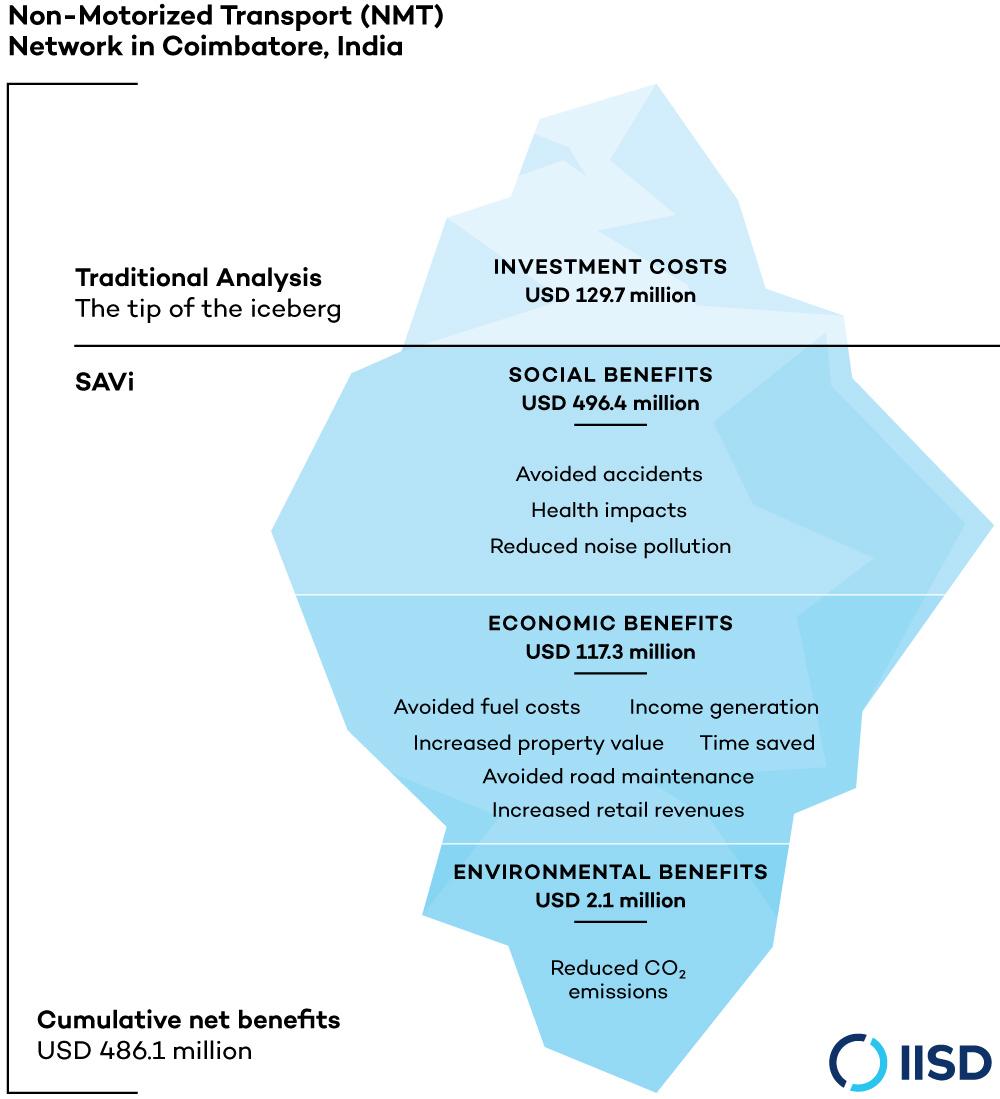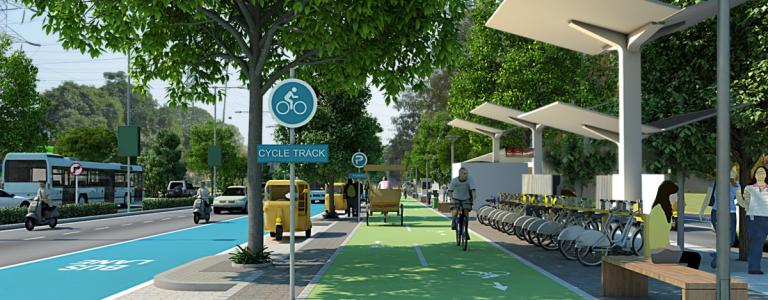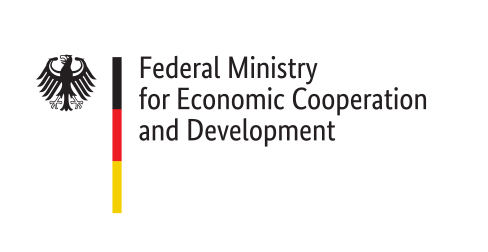Uncovering the Value of Sustainable Transport Investments
A Case Study in Coimbatore, India
Using a case study in Coimbatore, India, IISD demonstrates the importance of recognizing, valuing, and reflecting the full economic, social and environmental benefits and costs of a transport project in infrastructure decision-making.
Coimbatore, like many other rapidly expanding cities in India, faces numerous transport challenges. With a growing population of 1.6 million residents, the city’s infrastructure has struggled to keep up and is almost completely reliant on motorized transport. This had led to high traffic volumes, congestion, long commuting times, road safety issues, and air pollution.
To address this, the Coimbatore City Municipal Corporation has developed an ambitious Non-Motorized Transport (NMT) plan: a 300 km network of bicycle and pedestrian lanes, constructed over a 15-year period. The citywide network is expected to sustain existing and future NMT demand while meeting sustainable, low-carbon mobility targets, encouraging the shift from private motorized transport to active modes such as walking and cycling.
As part of a new series of sustainable transport case studies, the International Institute for Sustainable Development (IISD) has prepared a comprehensive economic analysis of the NMT plan in Coimbatore over the next 23 years. We found that the project was not economically viable if valued using only conventional metrics, such as cash flows and revenue streams. Yet, when a wider range of economic, social, and environmental benefits and costs are factored in, the NMT project becomes clearly investment worthy, both from an economic and a societal perspective.
When a wider range of economic, social, and environmental benefits and costs are factored in, the NMT project becomes clearly investment worthy, both from an economic and a societal perspective
To undertake these broader integrated assessments, IISD has developed a Sustainable Asset Valuation (SAVi) methodology based on system dynamics modelling. This methodology allows us to evaluate projects more holistically, forecasting how different transportation infrastructure options can affect or be affected by economic, social, and environmental factors and assigning monetary and financial values to these impacts. Through these analyses, we aim to raise awareness about the impacts of a project over its life cycle, with the hope of transforming decision-making to support long-term, sustainable solutions. This is not an off-the-shelf assessment tool. Rather, the SAVi methodology invests in a transparent, co-developed and customized approach that actively engages key stakeholders, including policy makers, investors and planners, providing a fuller picture of transport projects and their knock-on effects for the community and landscape.
In our assessment of the Coimbatore NMT plan, we found that it would result in the community experiencing significant health benefits from increased physical activity and lower levels of air pollution. Moreover, it would lead to higher retail and property prices, and significantly reduced costs from road accidents. Other benefits from the NMT plan include decreased CO2 emissions, diminishing road maintenance costs, and reduced noise pollution. Notably, the largest benefits from the NMT were found to be socio-economic rather than environmental. In terms of size, the greatest positive impact from the shift to non-motorized transport is the avoided costs of traffic accidents, amounting to USD 395 million cumulatively over the twenty-three-year period. This is followed by the health benefits (USD 89.9 million) and the avoided costs of fuel use (USD 54.8 million).

It is not only NMT projects where we see this play out. Assessments of other sustainable transportation projects around the world yield similar results. For instance, IISD is currently undertaking SAVi assessments of a Bus Rapid Transit (BRT) project in Bandung, Indonesia, and a Mass Rapid Transit (MRT) project in Bogotá, Colombia. Both projects produce a wide range of economic, social, and environmental benefits typically overlooked in a traditional cost-benefit analysis. In these cases, like in the Coimbatore NMT plan, the inclusion of the full range of benefits and costs yields a much higher return on investment, roughly 20 times higher for the BRT and four times higher for the MRT, and provides therefore a stronger rationale for greenlighting the projects.
These examples underscore the importance of recognizing, valuing, and reflecting the economic, social and environmental benefits and costs in economic and financial decision-making. Moreover, by considering the full range of benefits and costs in sustainable transportation projects, infrastructure decision makers can transcend the important but inherently narrow questions around economic viability and instead rightfully place the focus on the overall value to society and sustainable development.
Infrastructure decision makers can transcend the important but inherently narrow questions around economic viability and instead rightfully place the focus on the overall value to society
The SAVi report on the NMT network in Coimbatore, India, is available to read here. This article was originally created for the SLOCAT's blog series Towards a Gold Standard for Transport Investment.
You might also be interested in
A Sustainable Asset Valuation of Non-Motorized Transport in Coimbatore, India
A Sustainable Asset Valuation (SAVi) of the economic, social, and environmental benefits of a non-motorized transport (NMT) network in Coimbatore, India.
Turning infrastructure green offers huge savings on top of climate benefits
Replacing traditional concrete-heavy infrastructure with green alternatives such as mangroves to help stem rising seas is a cost-effective strategy that could save $248 billion a year while combating climate change, researchers said on Monday.
Sustainable Asset Valuation (SAVi) of a Public Bicycle Sharing System in Dwarka, New Delhi, India: A focus on the environmental, social and economic impacts of non-motorized transport infrastructure
This SAVi assessment values the environmental, social and economic benefits generated by a public bicycle sharing system. Its results demonstrate how the transport system delivers to sustainable mobility targets in Delhi.
Building a Climate-Resilient City: Transportation infrastructure
This policy brief examines ways of building resilient urban transportation infrastructure to reduce exposure to natural hazards, decrease potential risks by implementing mitigation measures and enhance adaptive capacity in a changing climate.

